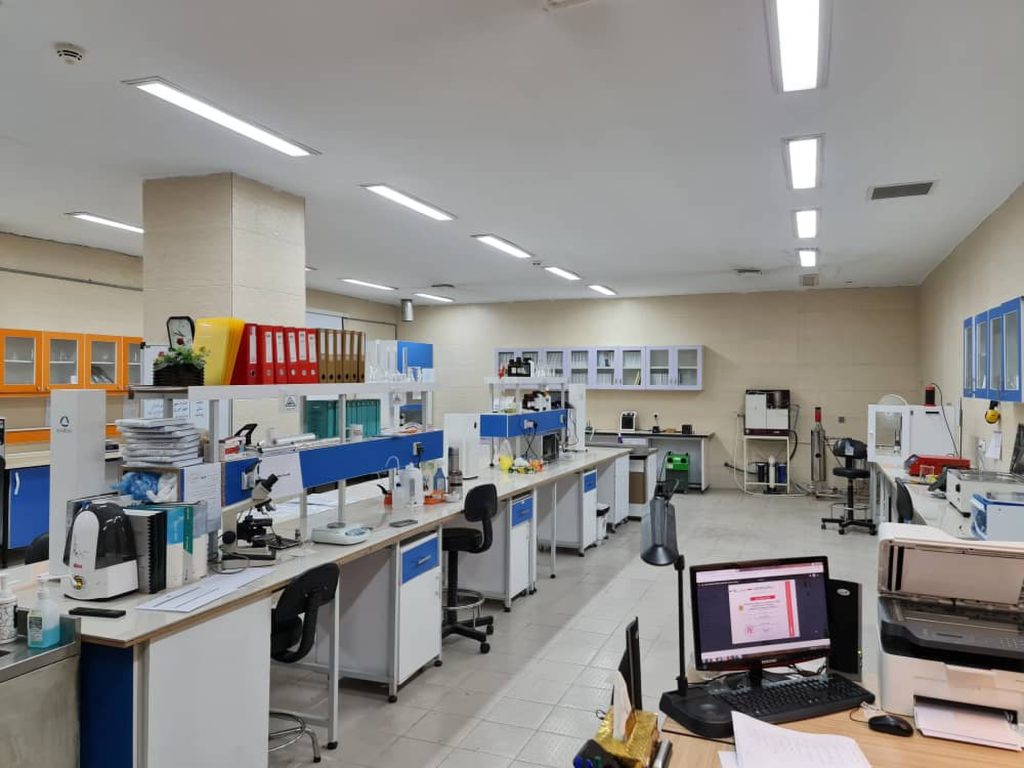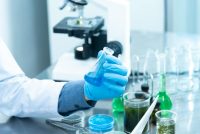
Working in a laboratory is exciting – it’s where science comes to life! But before mixing chemicals or heating solutions, it’s crucial to understand the importance of laboratory safety and the correct use of common laboratory apparatus. In this hall, we’ll study essential safety rules, how to protect yourself and others, and how to identify and use common lab equipment effectively.
Table of Contents
- Introduction
- Definition and meaning
- Laboratory Safety and Apparatus
- Laboratory Rules and Safety Measures
- Identification and Uses of Common Laboratory Apparatus
- Proper Handling and Disposal of Chemicals
- Conclusion
- Revision questions
Definition of Laboratory Safety
Laboratory safety refers to the set of rules, procedures, and practices designed to prevent accidents, injuries, and exposure to hazardous substances in a laboratory environment. It ensures that students, researchers, and professionals can conduct experiments safely and responsibly.
Definition of Laboratory Apparatus
Laboratory apparatus refers to the various tools and equipment used in scientific experiments and investigations, such as beakers, test tubes, Bunsen burners, measuring cylinders, and microscopes. These instruments are essential for observing, measuring, and conducting experiments accurately and safely.
READ ALSO – Differences between elements, Compounds and Mixture
Laboratory Rules and Safety Measures
Laboratories are full of potential hazards, from sharp instruments to harmful chemicals. To ensure a safe working environment, certain rules and safety measures must always be followed. Here are the most important ones:

General Safety Rules
1. No Eating or Drinking:
- Food and drinks are strictly prohibited in the lab to prevent contamination and accidental ingestion of harmful chemicals.
- Tip: Always wash your hands before leaving the lab.
2. Dress Appropriately:
Wear Personal Protective Equipment (PPE):
- Lab coat to protect your clothing and skin.
- Safety goggles to protect your eyes from chemical splashes.
- Gloves to protect your hands when handling harmful substances.
Avoid Loose Clothing and Open Shoes:
- Loose clothing and sandals can increase the risk of spills and accidents.
3. No Unauthorized Experiments:
- Only perform experiments approved by your teacher or lab supervisor.
- Tip: Always read and understand the experiment procedure before starting.
Handling Chemicals Safely
1. Read Labels Carefully:
- Always check the chemical label for hazard warnings and handling instructions.
- Example: Some chemicals are flammable, while others may be corrosive or toxic.
2. Proper Disposal:
- Dispose of chemicals as instructed – never pour them down the sink unless specified.
- Use labeled waste containers for specific types of waste (e.g., organic solvents, acids).
3. Avoid Direct Contact and Inhalation:
- Never touch, taste, or smell chemicals directly.
- When smelling a chemical, waft the odor by gently waving your hand above the container.
- Tip: Always work in a fume hood when handling volatile substances.
Equipment and Electrical Safety
1. Inspect Equipment Before Use:
- Check for cracks, leaks, or any damage before using laboratory apparatus.
- Report any faulty equipment to the supervisor immediately.
2. Safe Use of Electrical Equipment:
- Ensure your hands are dry before touching electrical equipment.
- Turn off all electrical appliances when not in use.
Emergency Procedures
1. Know the Location of Safety Equipment:
- Fire Extinguisher – For controlling small fires.
- Fire Blanket – To smother clothing fires.
- Eye Wash Station – For rinsing chemicals out of the eyes.
- Safety Shower – For chemical spills on the body.
2. Emergency Response:
- Chemical Spill: Inform the supervisor and use appropriate spill kits.
- Fire: Alert others, evacuate if necessary, and use the fire extinguisher if trained.
- Injury or Accident: Provide first aid and seek medical help immediately.
Summary on Laboratory Safety Rules
- No eating or drinking in the laboratory.
- Wear appropriate personal protective equipment (lab coat, safety goggles, gloves).
- Avoid loose clothing and open-toed shoes.
- Follow all instructions carefully.
- Read chemical labels before use.
- Properly dispose of chemicals as instructed.
- Never touch, taste, or smell chemicals directly.
- Use fume hoods for volatile substances.
- Inspect equipment for damage before use.
- Keep hands dry when handling electrical equipment.
- Turn off electrical appliances when not in use.
- Know the location of safety equipment (fire extinguisher, eye wash, safety shower).
- Report all accidents and spills immediately.
- Keep workspaces clean and organized.
- Wash hands before leaving the laboratory.
Identification and Uses of Common Laboratory Apparatus
Knowing how to identify and properly use lab equipment is essential for accurate and safe experiments. Here are some of the most common laboratory apparatus and their uses:
Common Laboratory Equipment
- Beaker
- Conical Flask (Erlenmeyer Flask)
- Measuring Cylinder
- Pipette
- Burette
- Test Tube
- Test Tube Rack
- Bunsen Burner
- Hot Plate
- Crucible
- Tongs
- Tripod Stand
- Wire Gauze
- Retort Stand
- Clamp and Bosshead
1. Beakers and Flasks
Beaker:
- Appearance: A cylindrical container with a flat bottom and a lip for pouring.
- Uses: Mixing, heating, and holding liquids. Not suitable for accurate measurements.
- Example: Measuring approximate volumes of solutions.
Conical Flask (Erlenmeyer Flask):
- Appearance: Cone-shaped with a narrow neck.
- Uses: Mixing and swirling liquids without risk of spillage. Suitable for titrations.
- Example: Holding reactants during a chemical reaction.
Volumetric Flask:
- Appearance: Pear-shaped with a long, narrow neck and a flat bottom.
- Uses: Preparing accurate standard solutions of known concentration.
- Example: Making a 1 M sodium chloride solution.
2. Measuring Instruments
Measuring Cylinder:
- Appearance: Tall, narrow cylinder with volume markings.
- Uses: Measuring accurate volumes of liquids. More accurate than beakers.
- Example: Measuring 50 mL of water for an experiment.
Pipette and Burette:
Pipette: Transfers a fixed volume of liquid with high accuracy.
- Example: Adding a precise volume of acid in titration.
Burette: Long, graduated tube with a tap at the bottom.
- Uses: Delivering variable but precise volumes of liquid, especially in titrations.
- Example: Measuring the volume of alkali added to an acid during titration.
3. Heating Equipment
Bunsen Burner:
- Appearance: A gas burner with an adjustable air supply.
- Uses: Heating substances, sterilizing equipment, and combustion experiments.
- Safety Tip: Always light with the air hole closed to avoid a flame blowout.
Hot Plate:
- Uses: Heating solutions more safely than an open flame, especially for volatile liquids.
Crucible and Tongs:
- Crucible: Small, heat-resistant container for heating solids at high temperatures.
- Tongs: Used to handle hot crucibles or glassware.
4. Support Equipment
Tripod Stand and Wire Gauze:
- Uses: Supporting beakers or flasks during heating. The wire gauze distributes heat evenly.
Retort Stand, Clamp, and Bosshead:
- Uses: Holding apparatus in place during experiments, such as titrations.
5. Safety Equipment
Safety Goggles and Gloves:
- Uses: Protecting eyes and hands from chemical splashes and harmful substances.
Fume Hood:
- Uses: Ventilating harmful fumes to ensure safe breathing air during chemical reactions.
The Importance of Laboratory Safety
Safety in the laboratory is not just about following rules; it’s about protecting yourself, your peers, and the environment. By understanding safety measures and knowing how to use lab equipment properly, accidents and injuries can be significantly reduced.
4. Summary of Key Points
- Always follow laboratory safety rules, including wearing appropriate PPE and knowing emergency procedures.
- Handle chemicals carefully and dispose of them according to guidelines.
- Identify and use common laboratory apparatus correctly to ensure accurate and safe experiments.
- Know emergency equipment locations, such as fire extinguishers, eye wash stations, and safety showers.
Conclusion on Laboratory Safety and Apparatus
Laboratories are places of discovery and learning, but they can also be dangerous without proper precautions. By following safety rules and understanding the use of common laboratory apparatus, you can conduct experiments confidently and safely.
So, the next time you step into a lab, remember – safety first, science second! Happy experimenting!
Revision Questions and Answers on Laboratory Safety and Apparatus
Question 1:
What are the three essential personal protective equipment (PPE) items required in the laboratory?
Answer:
- Lab Coat – Protects clothing and skin from chemical spills and splashes.
- Safety Goggles – Shields eyes from harmful chemical splashes and debris.
- Gloves – Protects hands when handling hazardous or corrosive substances.
Question 2:
Why is it important to avoid eating or drinking in the laboratory?
Answer:
Eating or drinking in the lab can lead to contamination and accidental ingestion of harmful chemicals, which can cause poisoning or other health hazards.
Question 3:
What is the main use of a measuring cylinder in the laboratory?
Answer:
A measuring cylinder is used to measure accurate volumes of liquids. It is more precise than beakers but less accurate than pipettes or burettes.
Question 4:
Which laboratory equipment is best suited for heating solids at high temperatures?
Answer:
A crucible is best suited for heating solids at high temperatures. It is made of heat-resistant materials and is used with a Bunsen burner.
Question 5:
What should you do in case of a chemical spill in the laboratory?
Answer:
- Inform the supervisor immediately.
- Evacuate the area if necessary.
- Use the appropriate spill kit to clean up the spill safely.
- Dispose of the waste in labeled hazardous waste containers as per safety guidelines.
